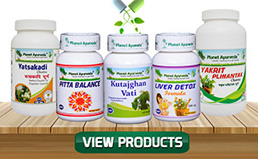Heartsease
Viola tricolor Violaceae Also called Wild pansy A common sight in hedgerows and on wasteground in summer, the wild pansy or heartsease grows to a height of around 40cm. This herbaceous annual has angular, branching stems with spear-shaped, deeply indented leaves. A single, delicate flower - usually purple, yellow or white, but often a mix of all three colours - sits elegantly at the end of each long stalk. Parts usedFlower, leaves and stems The aerial parts are gathered from heartease from June to late August, in the early morning before the flowers have opened. After drying quickly but gently, out of direct sunlight, the leaves, stems and flowers are all used to make infusions, powders, tinctures, extracts, capsules and syrups. ConstituentsSalicylic acid and its derivatives have been identified in the aerial parts of heartsease. There are also mucilages, anthocyanosides, tannins, flavonoids and peptides. Medicinal usesThe anti-inflammatory action of the salicylic acid in heartsease makes the plant highly effective when applied on a compress to ease skin problems such as acne, eczema, impetigo and seborrhoea (a scalp ailment caused by excessive secretions of sebum). Also, heartsease may be used to treat inflammation caused by rheumatism. Taken internally it can treat respiratory tract infections and its mucilage also has an expectorant effect which can be beneficial. The plant's anthocyanosides and flavonoids help to keep blood vessels healthy and improve the circulation. This is why it is often prescribed for arteriosclerosis (hardening of the arteries) and heart conditions, which could account for the plant's name. CAUTIONS
PREPARATION AND DOSAGEFor internal use TO TREAT eczema, impetigo, acne, pruritis POWDER Take 1-2g a day, divided into three doses, each taken just before a main meal. DRY EXTRAa Take 200-400mg a day, divided into three doses, each taken before a main meal. TINaURE (1:4 in 25% alcohol) Take 20 drops in water, three times a day after meals. For external use TO TREAT acne, seborrhoea (especially in children) COMPRESS Add 20-30g of fresh flowers to 500ml of boiling water. Infuse for 15 minutes. Strain. Soak a compress in the infusion. Apply to affected areas in the morning and evening. IF SYMPTOMS PERSIST CONSULT A DOCTOR CultivationSuited to any well-drained soil. Plant seeds in spring in a sunny or lightly shaded location. It grows as a short-lived perennial in mild areas. |
Ayurveda Book
This book on Ayurveda is meant for people interested to know about basics concepts of Ayurvedic healing and learn ayurveda concepts. Though there are many books Read More My SitesReal Testimonials
Connect with us |







